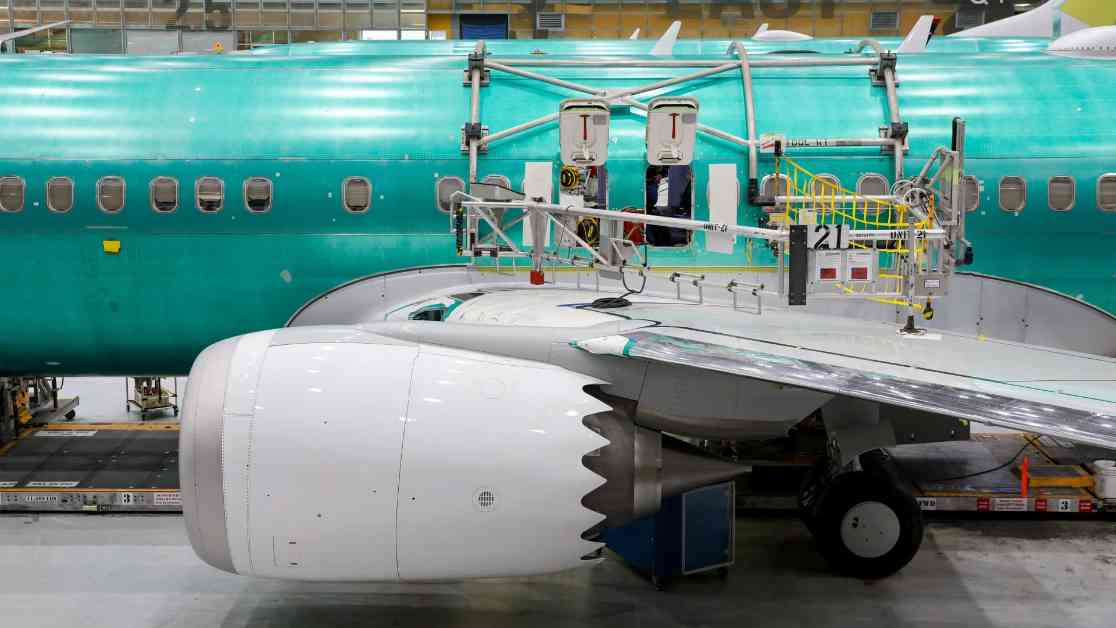Boeing’s Recovery Challenges One Year After Door Plug Incident
Boeing, the aerospace giant, is facing significant hurdles as it embarks on another year of rebuilding following a harrowing incident that shook the aviation industry. A year ago, a fuselage panel covering an unused emergency exit door detached midair from a Boeing 737 Max 9 operated by Alaska Airlines, sparking concerns over safety and quality standards. Although the incident caused panic among passengers, fortunately, no serious injuries were reported, and the plane made a safe emergency landing in Portland, Oregon.
The preliminary report from the National Transportation Safety Board revealed that crucial bolts were not properly installed before the aircraft left Boeing’s Renton, Washington factory, further tarnishing the company’s reputation as a leading U.S. exporter. In the wake of this incident, Boeing’s stock price has plummeted by more than 30% over the past year, in stark contrast to the S&P 500’s significant gains.
Boeing’s Response and Rebuilding Efforts
Over the past 12 months, Boeing’s leadership has implemented sweeping changes to address the underlying issues that led to the door plug incident. These changes range from overhauls in the executive team, including the appointment of a new CEO, to enhanced training programs for factory workers, particularly those who are new to the company. Boeing has made strides in improving quality control by introducing random audits at its factories, resulting in a significant reduction in defects in fuselages produced by Spirit AeroSystems.
The company has also prioritized addressing feedback from its employees through regular management sessions, demonstrating a commitment to fostering a culture of safety and quality. In light of the increased scrutiny from the Federal Aviation Administration (FAA) following the incident, Boeing has taken steps to strengthen oversight and regulatory compliance to prevent similar mishaps in the future.
Financial Struggles and Production Challenges
Boeing’s financial woes have been exacerbated by mounting losses and delivery delays, with the company failing to post an annual profit since 2018. The grounding of its 737 Max fleet in the aftermath of two fatal crashes in 2019 dealt a severe blow to Boeing’s reputation and bottom line. Subsequent quality issues have further complicated the production and delivery of key aircraft models, including the 787 Dreamliner and Air Force One planes.
To address these challenges, Boeing brought in a new CEO, Kelly Ortberg, a seasoned aerospace executive with a track record of industry leadership. Ortberg’s tenure began amidst a labor strike that disrupted production for nearly two months, underscoring the urgency of stabilizing operations and restoring investor confidence. Despite these setbacks, Ortberg’s strategic vision and hands-on approach have garnered praise from industry insiders, who view his leadership as a pivotal step towards Boeing’s recovery.
Looking Ahead: A Long Road to Redemption
As Boeing navigates a complex landscape of financial restructuring and operational realignment, the company faces a critical juncture in its quest for redemption. Ortberg’s commitment to prioritizing core business functions and streamlining operations reflects a broader shift towards sustainable growth and profitability. While challenges persist in the competitive aviation market, Boeing’s steadfast focus on safety, quality, and customer satisfaction will be paramount in shaping its future trajectory.
The road to recovery for Boeing is fraught with obstacles, but with a renewed emphasis on transparency, accountability, and innovation, the company is poised to emerge stronger and more resilient than ever. As stakeholders closely monitor Boeing’s progress in the coming months, the aviation industry holds its breath, awaiting a new chapter in the storied legacy of this aerospace titan.



















